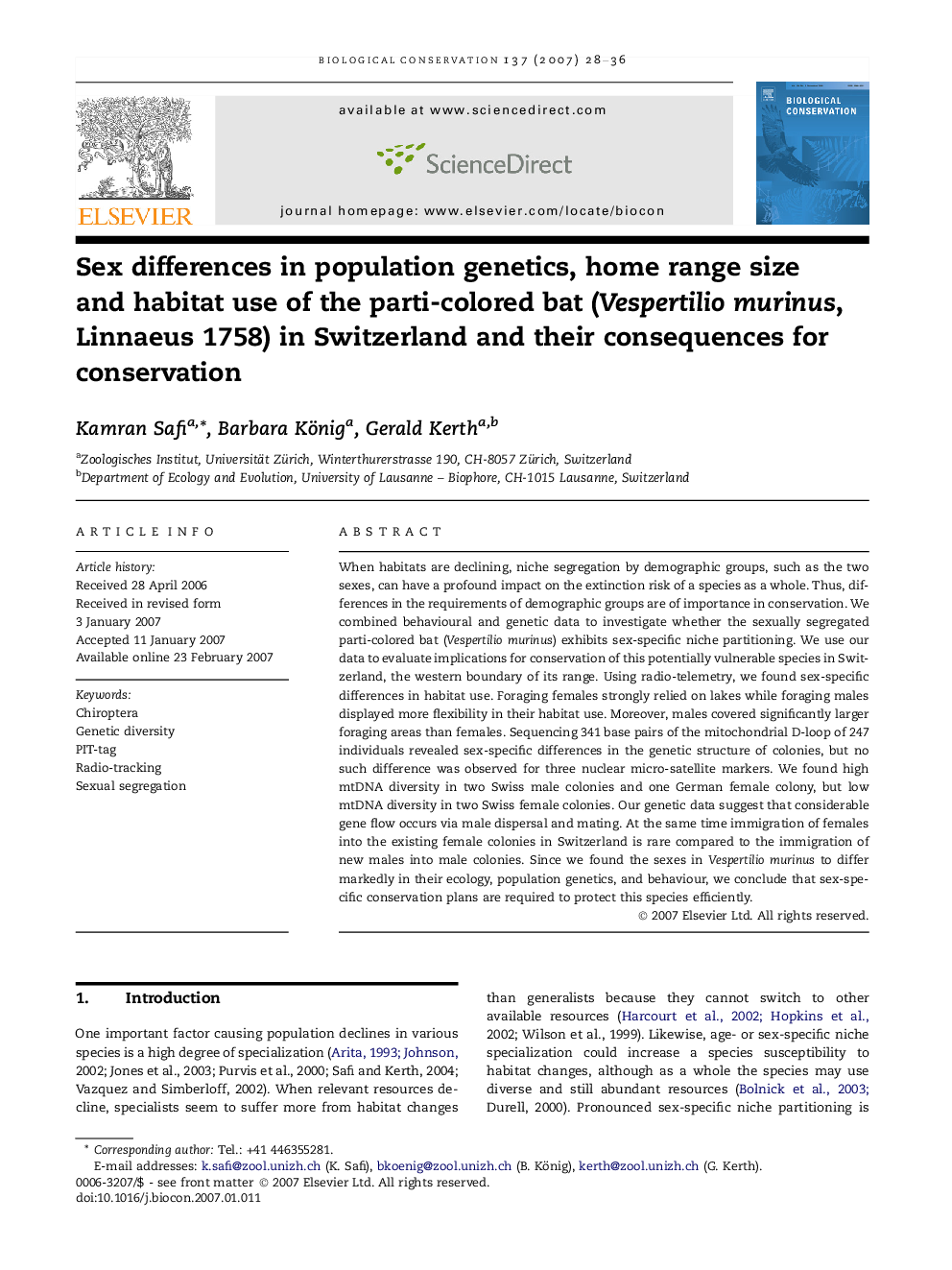| Article ID | Journal | Published Year | Pages | File Type |
|---|---|---|---|---|
| 4387491 | Biological Conservation | 2007 | 9 Pages |
When habitats are declining, niche segregation by demographic groups, such as the two sexes, can have a profound impact on the extinction risk of a species as a whole. Thus, differences in the requirements of demographic groups are of importance in conservation. We combined behavioural and genetic data to investigate whether the sexually segregated parti-colored bat (Vespertilio murinus) exhibits sex-specific niche partitioning. We use our data to evaluate implications for conservation of this potentially vulnerable species in Switzerland, the western boundary of its range. Using radio-telemetry, we found sex-specific differences in habitat use. Foraging females strongly relied on lakes while foraging males displayed more flexibility in their habitat use. Moreover, males covered significantly larger foraging areas than females. Sequencing 341 base pairs of the mitochondrial D-loop of 247 individuals revealed sex-specific differences in the genetic structure of colonies, but no such difference was observed for three nuclear micro-satellite markers. We found high mtDNA diversity in two Swiss male colonies and one German female colony, but low mtDNA diversity in two Swiss female colonies. Our genetic data suggest that considerable gene flow occurs via male dispersal and mating. At the same time immigration of females into the existing female colonies in Switzerland is rare compared to the immigration of new males into male colonies. Since we found the sexes in Vespertilio murinus to differ markedly in their ecology, population genetics, and behaviour, we conclude that sex-specific conservation plans are required to protect this species efficiently.
